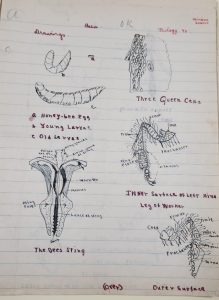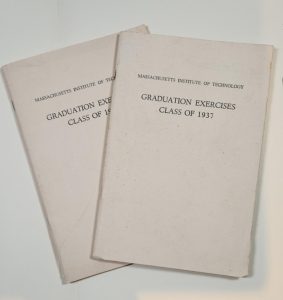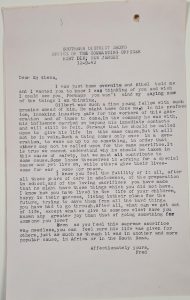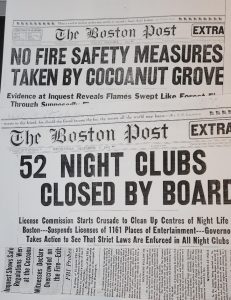By Rakashi Chand, Reading Room Supervisor
Eighty years ago, on 28 November 1942, the biggest nightclub fire in history took the lives of 492 people. The Cocoanut Grove, a popular Boston nightclub featuring a grand dining room, multiple bars, and live entertainment, suddenly burst into flames. The fire led to news laws and fire codes across the country, advances in the care of burn victims, and updates to emergency responses and emergency room procedures. Growing up in Boston, I knew about the fire. My father always warned me to locate the exits as soon as I entered a night club, theatre, or restaurant because of the Cocoanut Grove.
In November 1942 the Cocoanut Grove was owned by Barney Welansky, a mob lawyer who bragged about his friendship with the Mayor and local officials. Welansky made the club swankier than it had been before making it a premier hotspot in New England. He also wanted it to make money, so exits were locked to ensure guests did not leave without paying the bill. The only way in or out of the Grove were revolving doors. When panic set in, the doors became jammed with people desperately trying to escape. It is estimated that three times the legally allowed number of people were in the nightclub that night.
The club was elaborately decorated to feel like the South Seas, filled with artificial palm trees and opulent furniture. All were made from highly flammable material. When the fire started, it took all of eight minutes for the club to go from laughter to horrifying screams and eventually the silence of asphyxiation. Emergency responders had been preparing for a potential East Coast attack due to WWII, and all their practice went into action that night. The Emergency response was on a scale never seen before, utilizing police, fire fighters, EMTs, the Navy, the Army, and good people who happened to be nearby that night.
The Massachusetts Historical Society holds the Papers of one of the victims of the fire, Gilbert Winslow, in the Ruby Winslow Lin Papers. Lieutenant-Colonel Ruby (Winslow) Linn, U. S. Army dietician, kept the papers of her brother, Gilbert Williams Winslow, born in 1915, a safety engineer and graduate of MIT. Gilbert and his wife Betty Lee (Moment) Winslow died in the Cocoanut Grove Fire. The collection contains essays and projects from school, his graduation from MIT, letters of condolence, and newspaper clippings about the fire.




The Winslow Family, like so many other families, would never be the same after the fire. The city of Boston would never be the same. The lessons learned 80 years ago must never be forgotten.
Further Reading:
The Cocoanut Grove revisited : U.S. Navy records document how 492 died in deadly nightclub fire 75 years ago by Daniel J. Fleming (Prologue, vol. 49, no. 3 (Fall 2017), p. 6-17.)
Holocaust! By Paul Benzaquin (New York: Holt, 1959)
Boston on Fire: A History of Fires and Firefighting in Boston by Stephanie Schorow (Beverly, Mass.: Commonwealth Editions, c2003)

